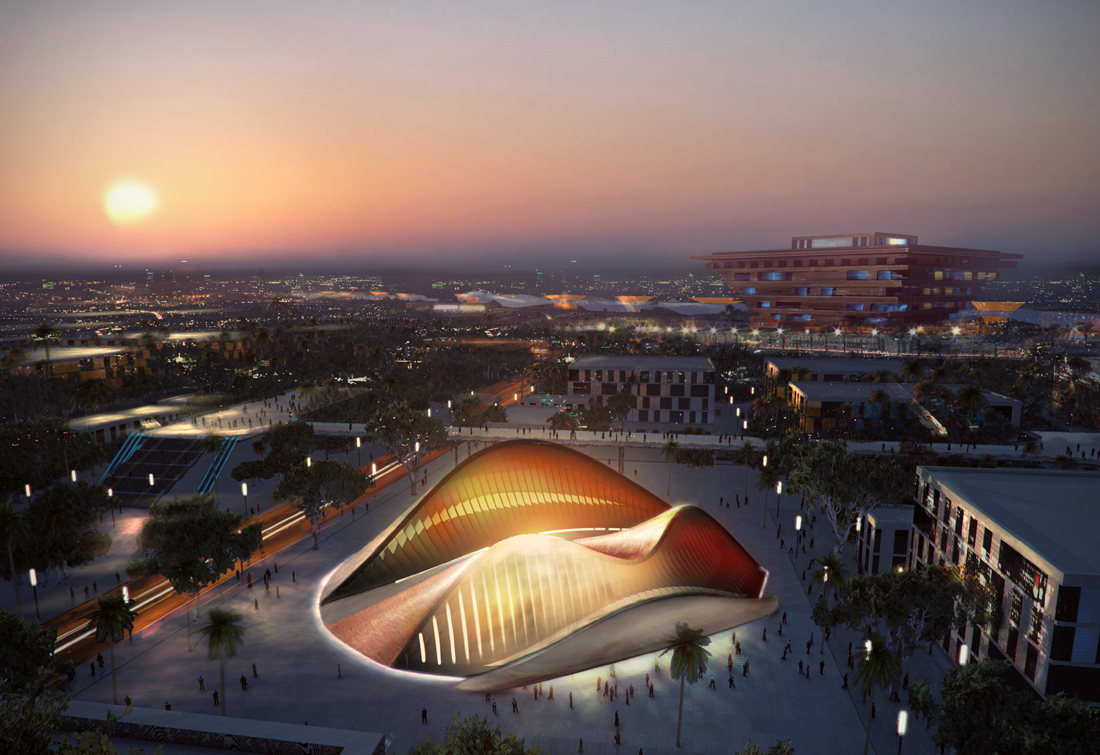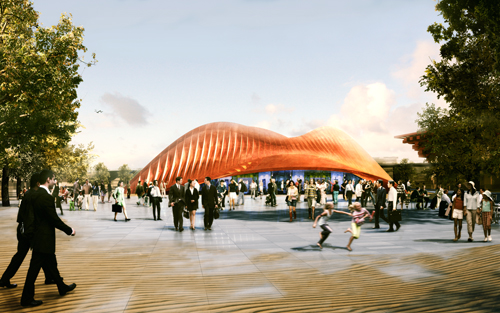|
|


ADVERTISEMENT
Buy Your own advertising
spaces!
.
Download Adobe Acrobat Reader to open [PDF] files.
Recent Visitors
Shifting dunes – from expo in China to Saadiyat Island
2009. 2 October
 by Daniel Bardsley
by Daniel Bardsley
(thenational.ae)
It may be hard to believe, but a curvaceous structure taking shape in a vast construction site in eastern China is expected to be one of the UAE capital’s major cultural attractions in the years to come.
The UAE pavilion for Expo 2010 in Shanghai is starting to look like the sweeping sand dunes that one of Britain’s top architects, Lord Foster, designed it to resemble.
At the end of Expo 2010, which is expected to attract 70 million visitors, the UAE pavilion will be dismantled and shipped away to be reassembled on Saadiyat Island in Abu Dhabi.
Saudi Arabia and the UAE are the only Middle Eastern Arab countries that will have their own pavilions at Expo 2010, and the Emirates’ enthusiastic involvement in the event comes amid growing ties with China.
Sheikh Mohammed bin Zayed, Crown Prince of Abu Dhabi and Deputy Supreme Commander of the Armed Forces, recently visited China, and in 2008, Sheikh Mohammed bin Rashid, Vice President of the UAE and Ruler of Dubai, led a delegation to the country.
Trade between the two nations grew by 40.5 per cent last year, to US$28.2 billion (Dh104bn), and it was announced in August that the UAE would open a consulate in Shanghai, China’s business capital and one of the world’s fastest-growing cities. Tang Dengjie, the vice mayor of Shanghai, said it was “really a very encouraging sign” that the UAE had committed to building its own pavilion.
Tang Dengjie, the vice mayor of Shanghai, said it was “really a very encouraging sign” that the UAE had committed to building its own pavilion.
“It will enable people to study and know about economic and social development in the UAE,” he said.
Demonstrating the achievements of rapidly developing countries such as the UAE was a major purpose of Expo 2010, beyond the obvious objective of attracting millions of visitors to Shanghai, he said.
The pavilions will be a stage “for developing countries to show their economic and social progress and for the world to enhance co-operation”, he said.
Currently, the UAE pavilion, which officials have said they hope will attract 10 per cent of the expo’s expected 70 million visitors, sits amid mud, rubble and construction equipment. But when it is officially revealed to the world at the opening of the expo on May 1 next year, the structure is expected to resemble two large, golden sand dunes.
It will be made of recyclable materials in keeping with Expo 2010’s theme of sustainable urban development.
Mirroring the appearance of a desert dune shaped by prevailing winds, the pavilion is rippled on the windward side and smooth on its sheltered side.
The stainless steel structure, a design by the British architectural practice Foster and Partners, will appear red, copper and gold in the day, then will glow with golden internal lighting at night.
After Expo 2010 closes on October 31, the 3,000-square-metre pavilion will be dismantled, transported to Abu Dhabi and rebuilt as a cultural centre on Saadiyat Island, which will also be home to branches of the Guggenheim and Louvre museums.
The building will become the first pavilion since the tradition of grand international expos began with London’s Great Exhibition of 1851 to be dismantled and rebuilt in another country.
Only a handful of the dozens of pavilions being built for Expo 2010 will remain where they are, among them the China pavilion.
While nearly every country is participating in Expo 2010, only 42 countries will have individual pavilions. Among these are Poland, France, Pakistan, Singapore, Japan and the Czech Republic.
The 5.3-sq km expo site cleared by the Chinese government on both sides of the Huangpu River will include the World Expo Centre, the Expo Performance Centre and corporate pavilions.


